Following NASA’s selection of Houston as the site of a new center to manage the nation’s new and expanding human spaceflight program, on Nov. 1, 1961, the agency announced the opening of the Manned Spacecraft Center (MSC), today known as NASA’s Johnson Space Center (JSC). The MSC’s original functions included a new mission control center, training facilities for astronauts, facilities for testing spacecraft for the extreme environment of spaceflight, offices, and laboratories, with the overall goal of landing a man on the Moon and returning him safely to the Earth before the end of the decade. Construction of the nine-story Project Management Building at the Clear Lake site began on Dec. 5, 1962, and concluded on March 15, 1964. During construction, engineers and managers worked in 14 separate leased facilities in southeast Houston. The center’s first director, Robert R. Gilruth, took up residence in the interim headquarters in the Farnsworth and Chambers Building on March 1, 1962. Following the Project Management Building’s completion, Gilruth relocated his office to the edifice’s top floor on March 6, 1964. The move of all program managers and institutional directors was completed by the end of June 1964.
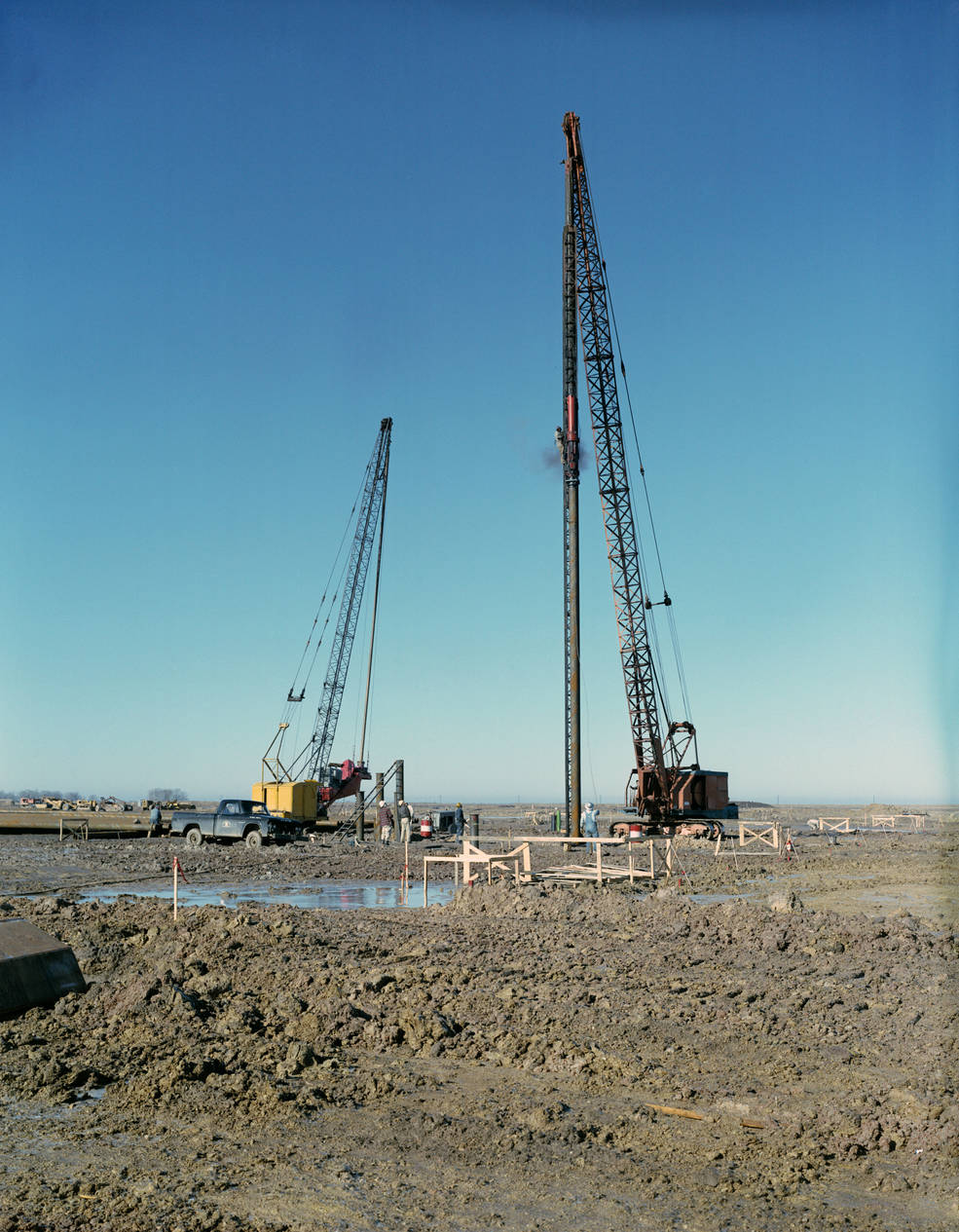
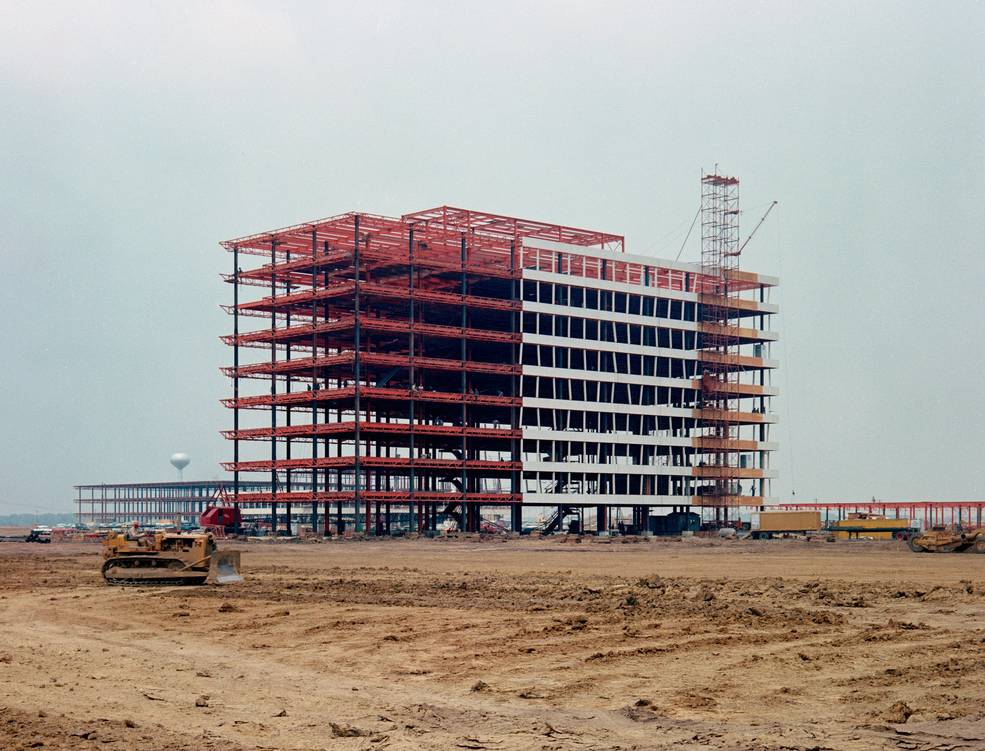
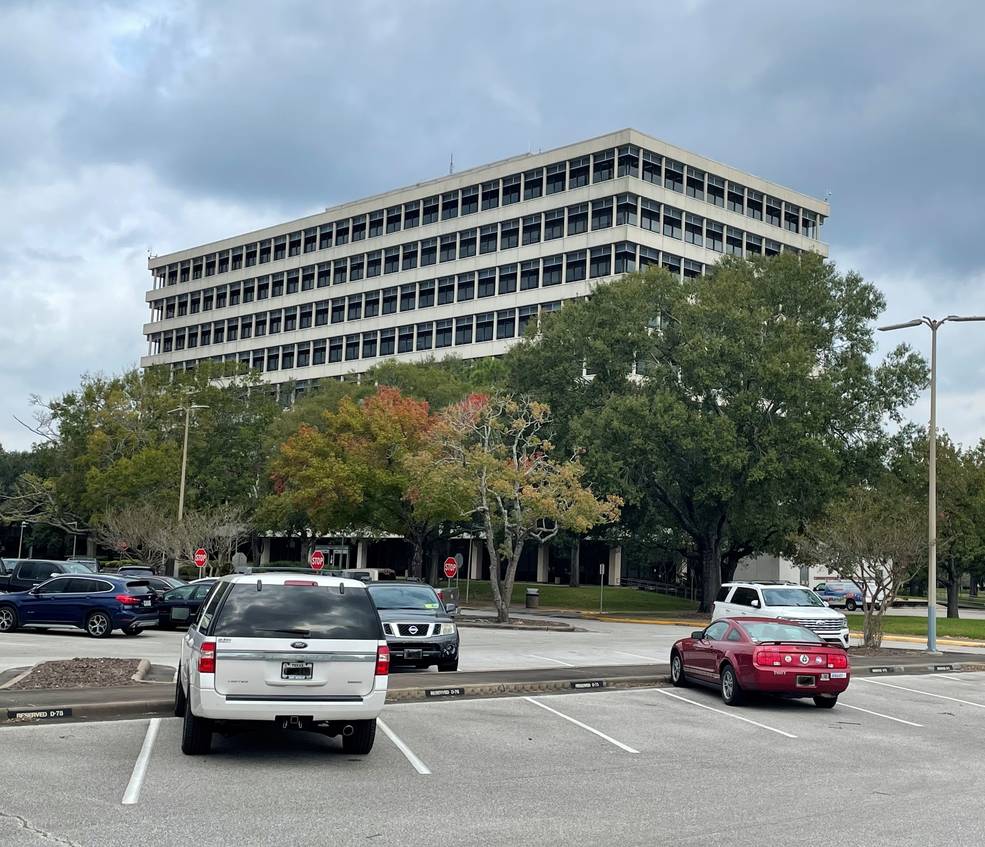
Left: In early 1963, construction workers drive the first pilings for the Project Management Building, originally designated as Building 2, at the Clear Lake site of the Manned Spacecraft Center (MSC), now NASA’s Johnson Space Center (JSC) in Houston. Middle: Progress of the construction of MSC’s Project Management Building in May 1963. Right: The Project Management Building, now JSC’s Building 1, in November 2021.
Over the decades, MSC’s directors and other top program and directorate leaders continued to be located in the Project Management Building. Originally designated as Building 2, the building swapped numbers with the Public Affairs Building, originally known as Building 1, on June 30, 1974, and has been known as Building 1 ever since. In 1987, workers replaced the original set of lobby doors with a vestibule and two sets of automatic sliding doors to improve the lobby’s climate control. In addition to routine renovations and upgrades, workers carried out an asbestos abatement throughout the building in July 1988 and renovated the lobby in September 2011.
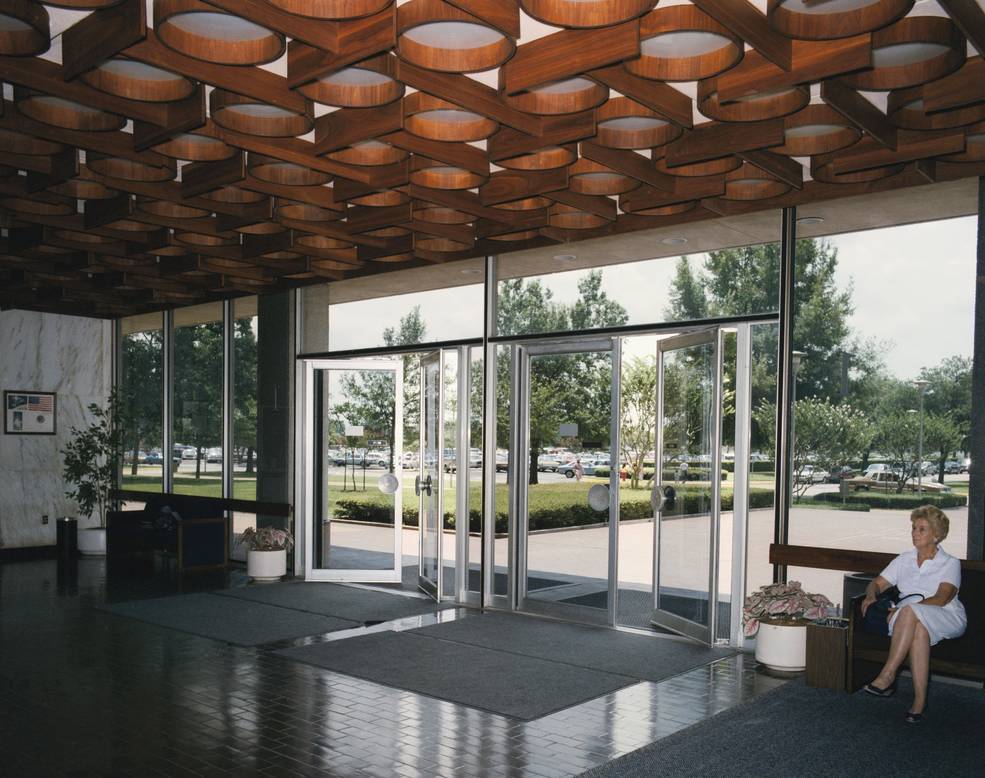

The lobby of Building 1 in 1986, left, and in November 2021. Find all the differences.
In front of the Project Management Building, workers Installed an 88-foot flagpole in February 1965 to fly the American flag. During welcome home ceremonies for the Gemini 3 crew on April 1, 1965, officials raised an American flag they carried into orbit during their mission. That flag, along with a Gemini Program banner, flew 24 hours a day during every Gemini mission. Both were retired and placed on display after Gemini XII, the final mission of the program. The practice continues today, with the space station flag flying continuously since November 2000, when human occupancy of the orbiting laboratory began. Three other flagpoles were added later, including a 77-foot Texas flag pole, a 77-foot NASA flag pole, and a 70-foot mission flag pole, the last added in September 2000. In addition to lowering flags to half-mast for national memorial events, the flags are flown at half-staff each year on Remembrance Day in tribute to the astronauts lost in the Apollo 1, Challenger, and Columbia accidents.
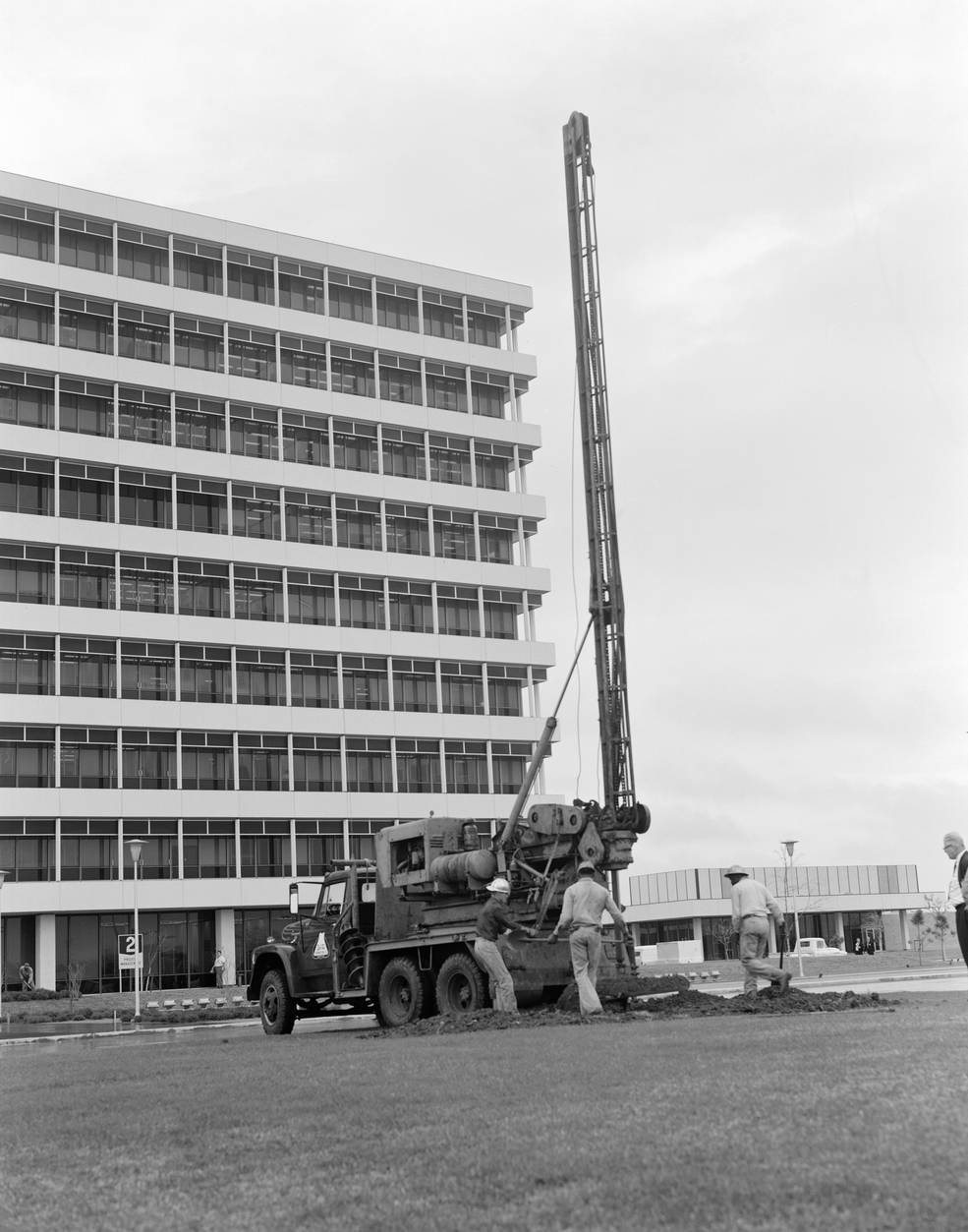
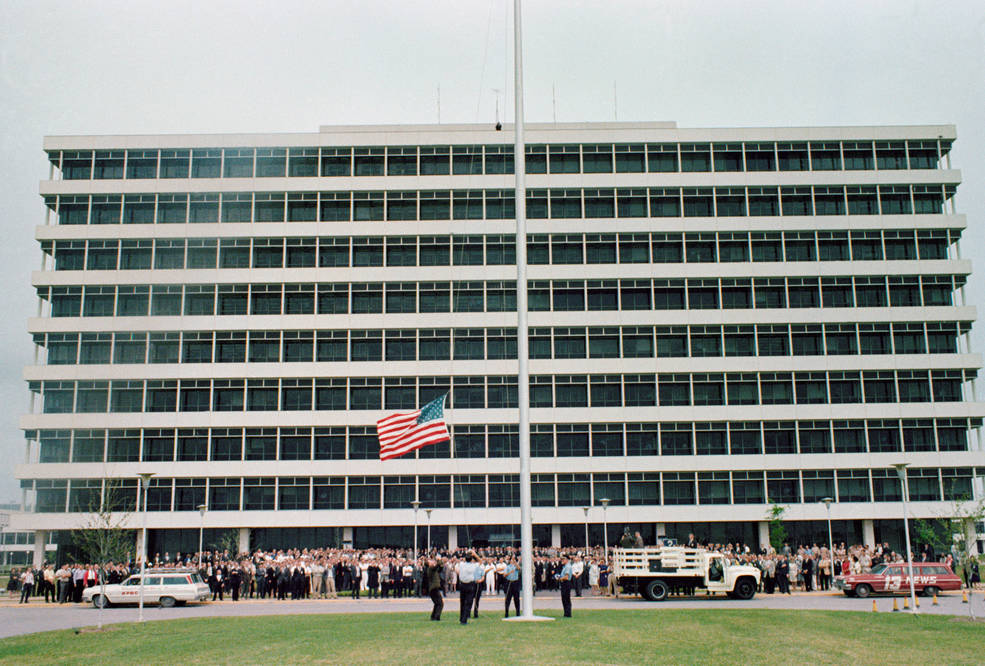
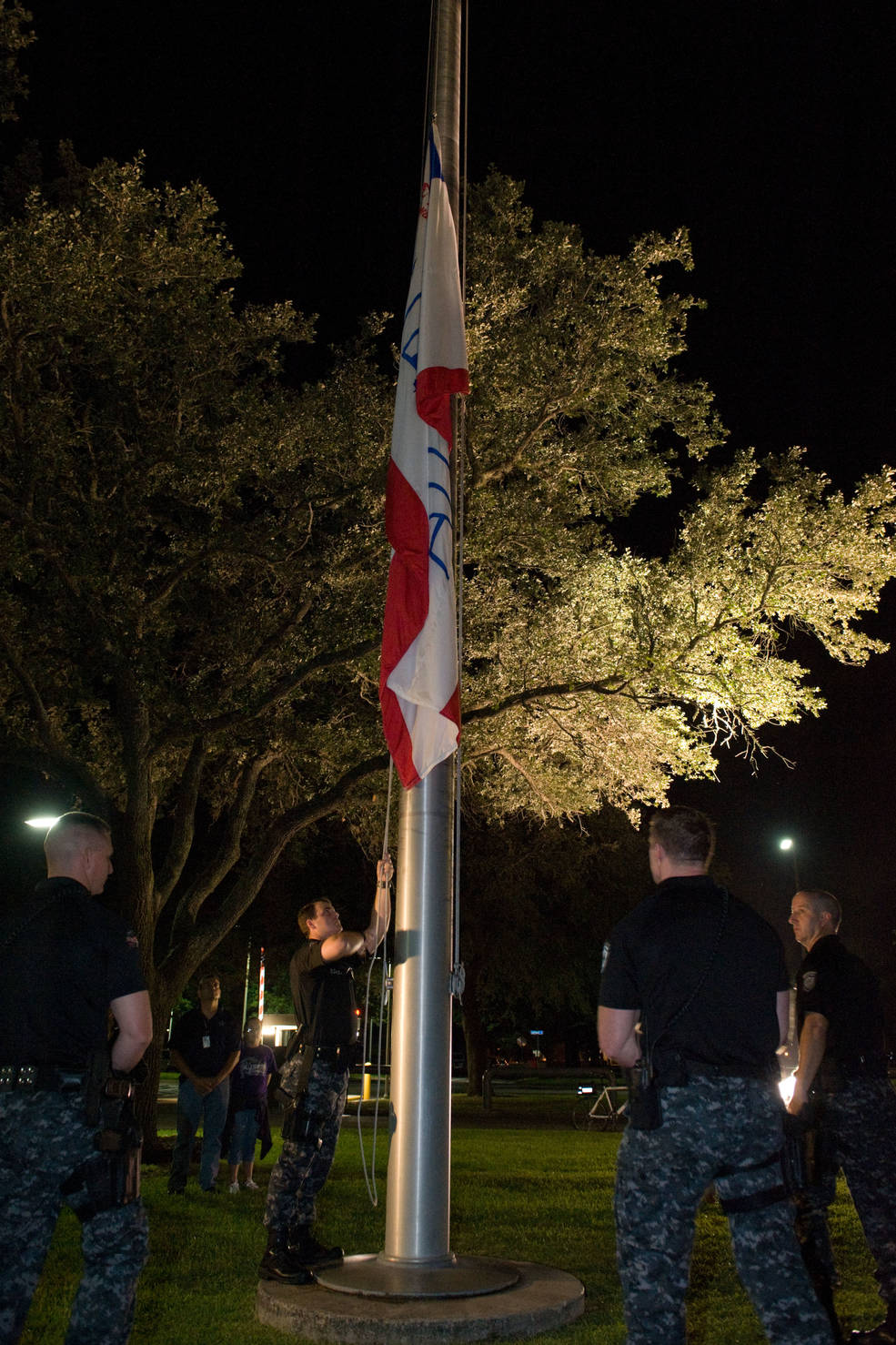
Left: In January 1965, workers dig the hole for the original 88-foot flagpole in front of the Project Management Building. Middle: During an April 1965 ceremony, officials raise the American flag flown aboard Gemini 3. Right: In July 2011, lowering of the Atlantis banner after the STS-135 landing, marking the end of the space shuttle program.
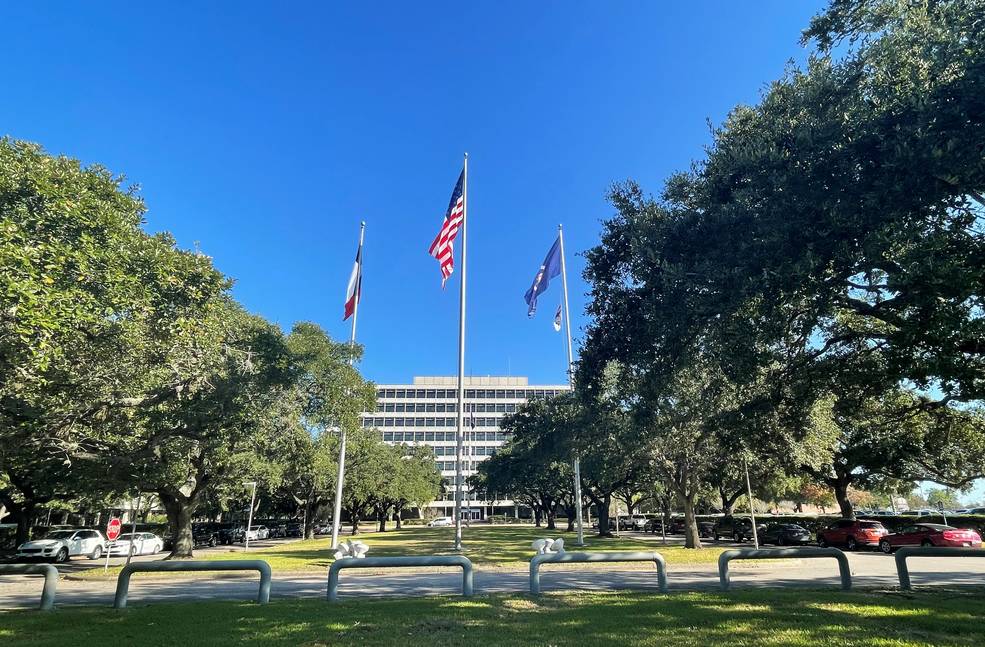
The four flagpoles in front of Building 1 at NASA’s Johnson Space Center in Houston in November 2021.
Center Directors
While the specific programs they managed have changed over the years, the primary function of JSC’s directors has been to lead the world’s premier human spaceflight facility and the civil service and contractor employees who conduct the work of the center on behalf of the agency. Their varied activities have included leading management meetings, greeting astronauts after their return from space, dedicating new facilities, meeting with local politicians, world leaders, and celebrities, and many others to maintain America’s leadership in human spaceflight. This article and the series that follows will provide information into the 13 unique individuals who have led the human spaceflight center over the past 60 years and continue to lead us into the future of human exploration. This article focuses on roughly the first 10 years of MSC, to the first Moon landing and a little beyond, and the man who led MSC through that first decade. For more information about the directors who have led first MSC and now JSC, please visit Johnson Space Center Directors | NASA.
Robert R. Gilruth (November 1961 to January 1972)
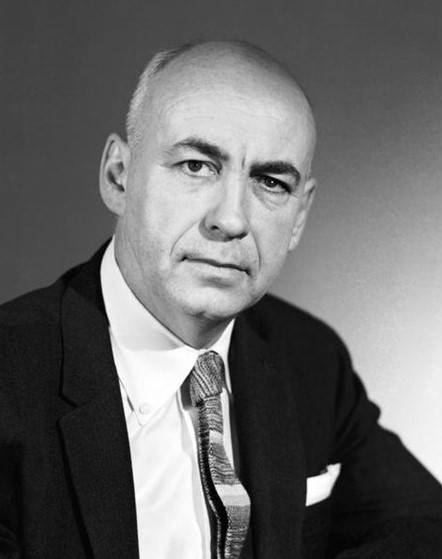
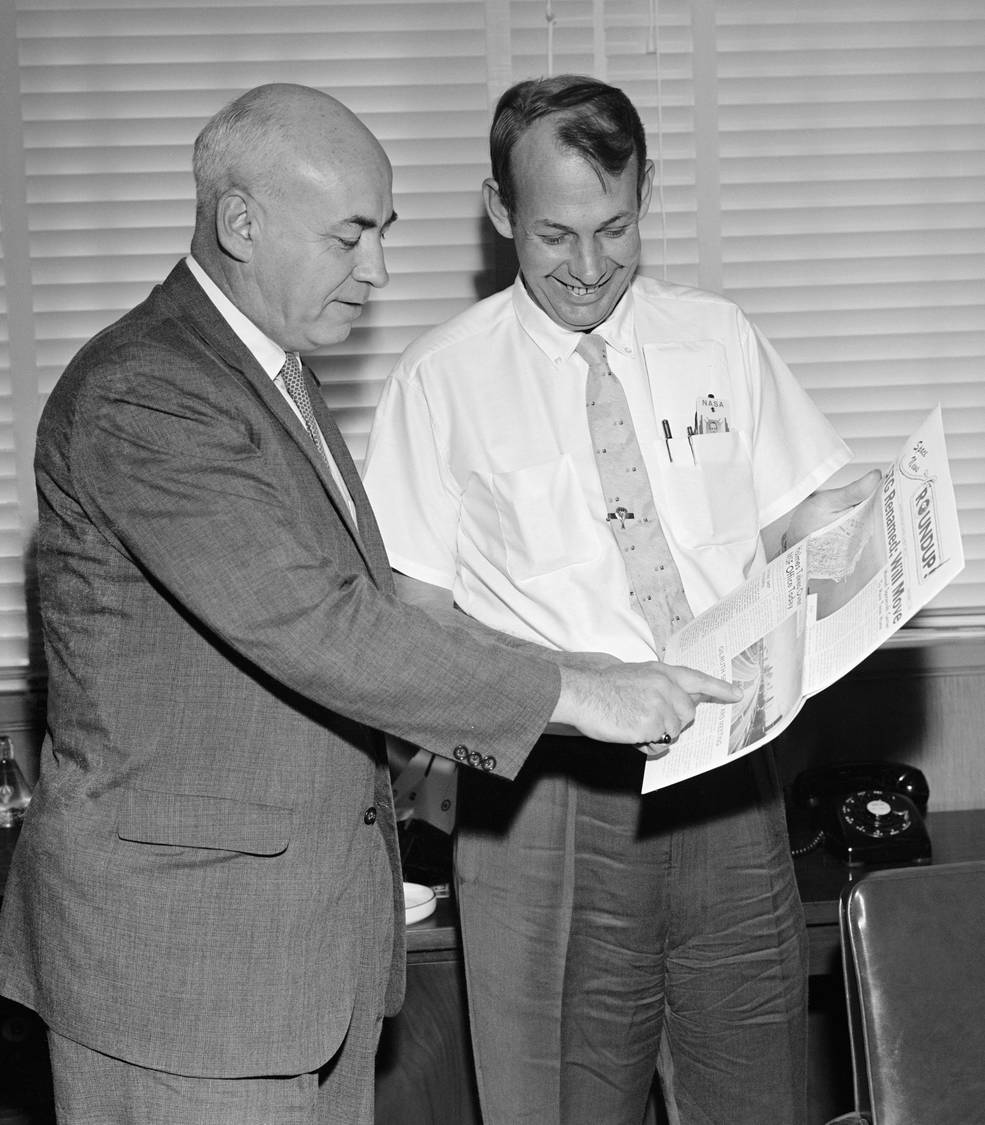
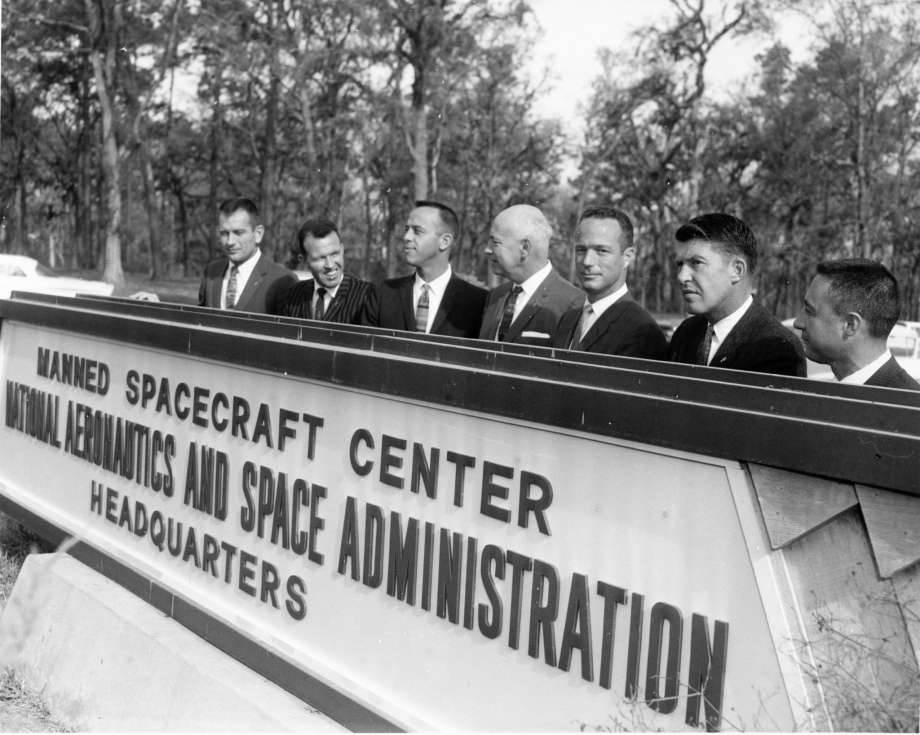
Left: Portrait of Robert R. Gilruth, the first director of the Manned Spacecraft Center (MSC), now NASA’s Johnson Space Center in Houston. Middle: On Nov. 1, 1961, Gilruth, left, and his special assistant Paul E. Purser review the first edition of the Space News Roundup announcing the renaming of the Space Task Group and its move to Houston. Right: In March 1962, Gilruth, center, with six of the seven Mercury astronauts behind the sign marking the interim MSC Headquarters in the Farnsworth and Chambers Building in southeast Houston.
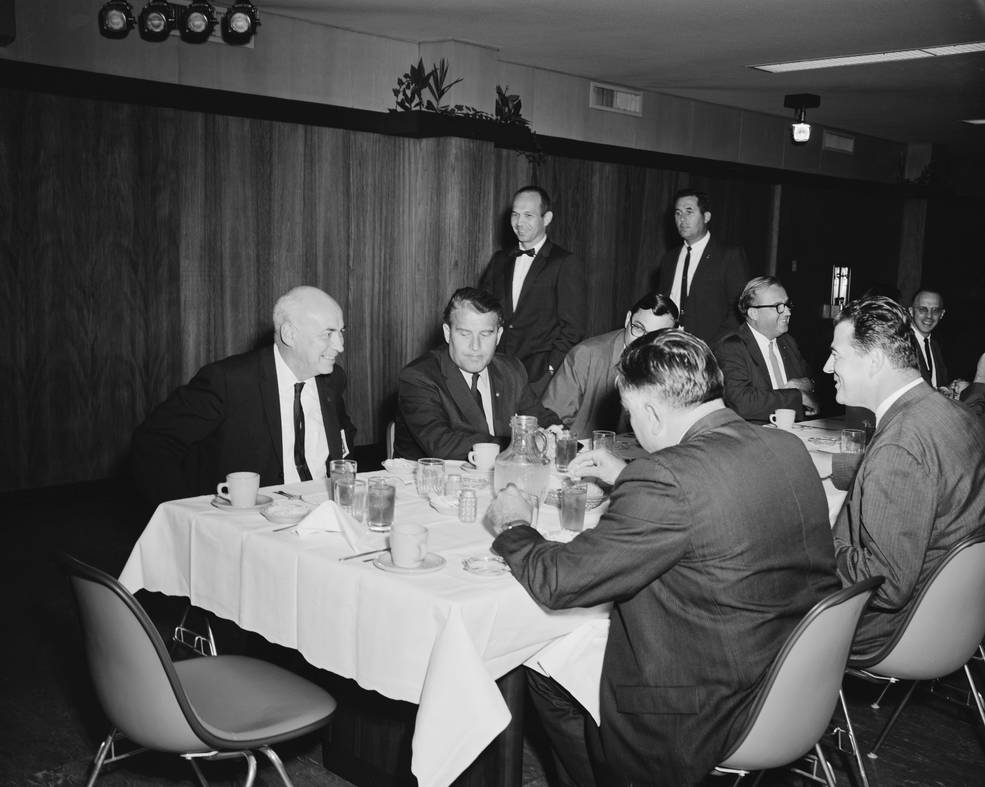
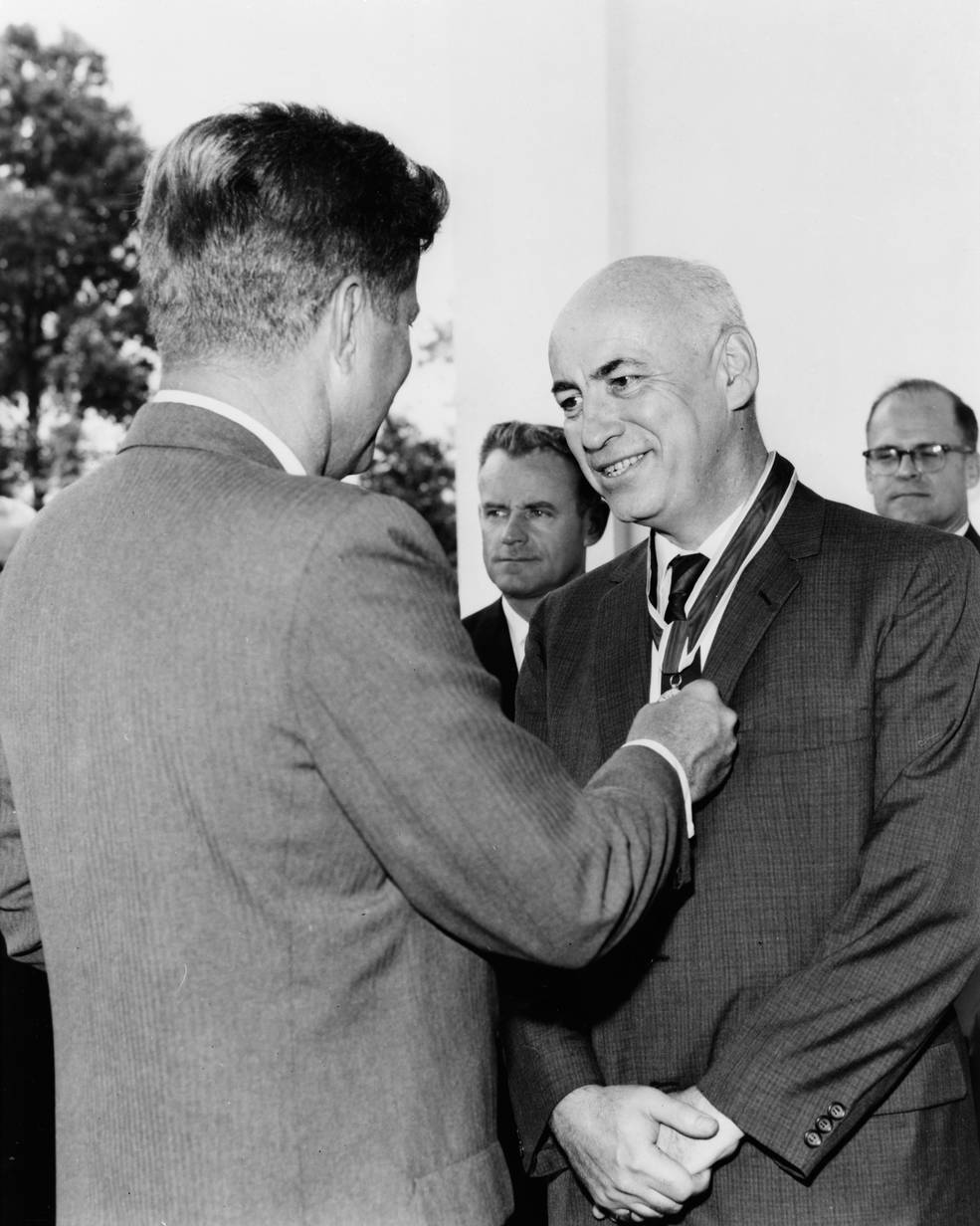
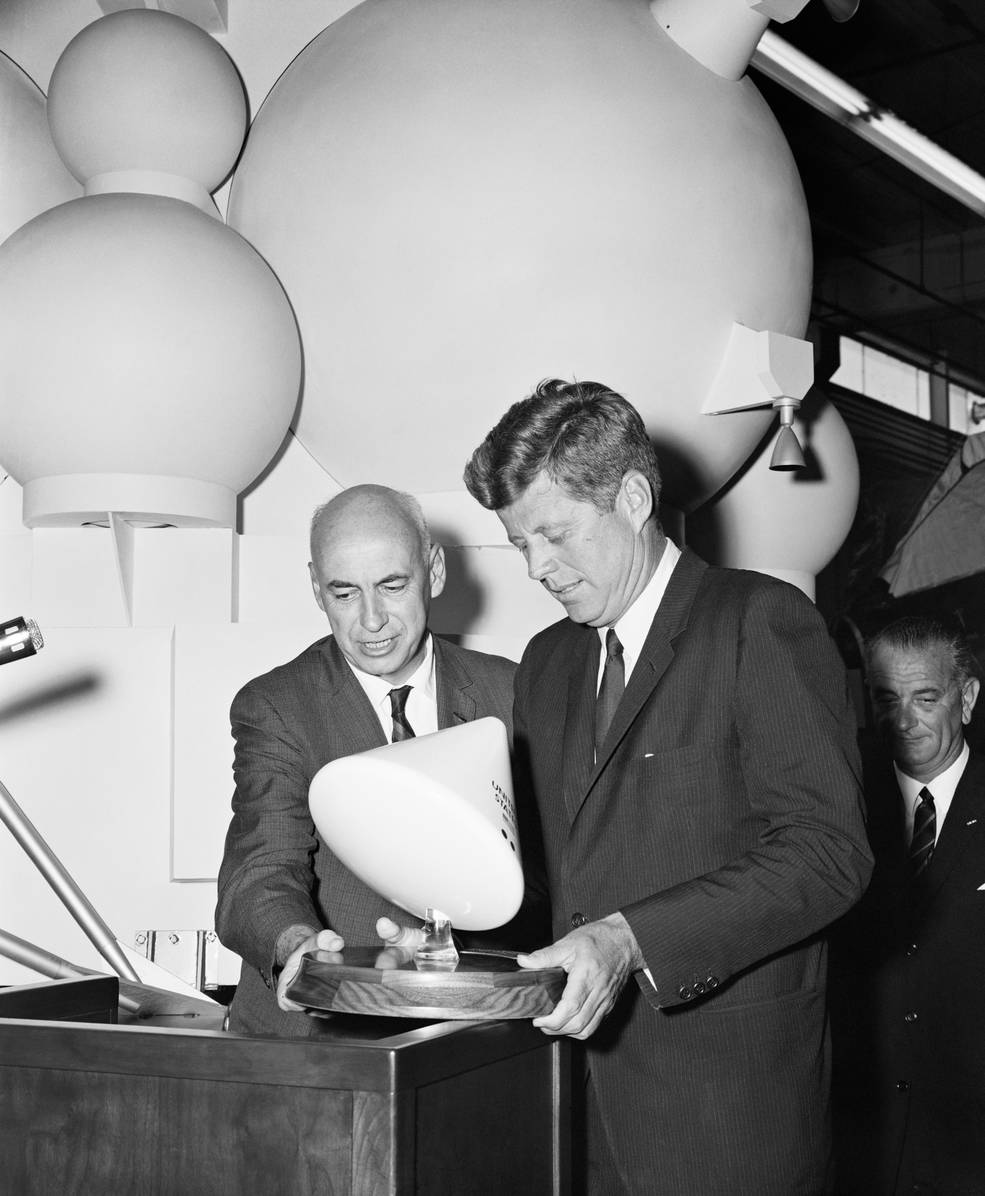
Left: Robert R. Gilruth, director of the Manned Spacecraft Center (MSC), now NASA’s Johnson Space Center in Houston, left, hosting Wernher von Braun, director of NASA’s Marshall Space Flight Center in Huntsville, Alabama, at MSC’s headquarters in the Farnsworth and Chambers Building in June 1962. Middle: In September 1962, during a White House ceremony, President John F. Kennedy presents Gilruth with the Presidential Award for Distinguished Federal Civilian Service. Right: Gilruth presents a model of the Apollo spacecraft during President Kennedy’s visit to MSC’s Rich Building in September 1962.
Gilruth began his lengthy public service career in January 1937 at the National Advisory Committee for Aeronautics Langley Memorial Aeronautical Laboratory in Hampton, Virginia. By 1952, he was the assistant director of the Langley laboratory. On Oct. 1, 1958, NASA opened for business, and five weeks later created the Space Task Group (STG) at Langley with Gilruth as its director, charged with putting an American in space. Following President John F. Kennedy’s May 1961 announcement of the Moon landing goal, the STG outgrew its facilities at Langley to handle the additional work. On Sept. 19, 1961, NASA announced that the STG would relocate to Houston, and on Nov. 1 become the Manned Spacecraft Center, with Gilruth as its first director.
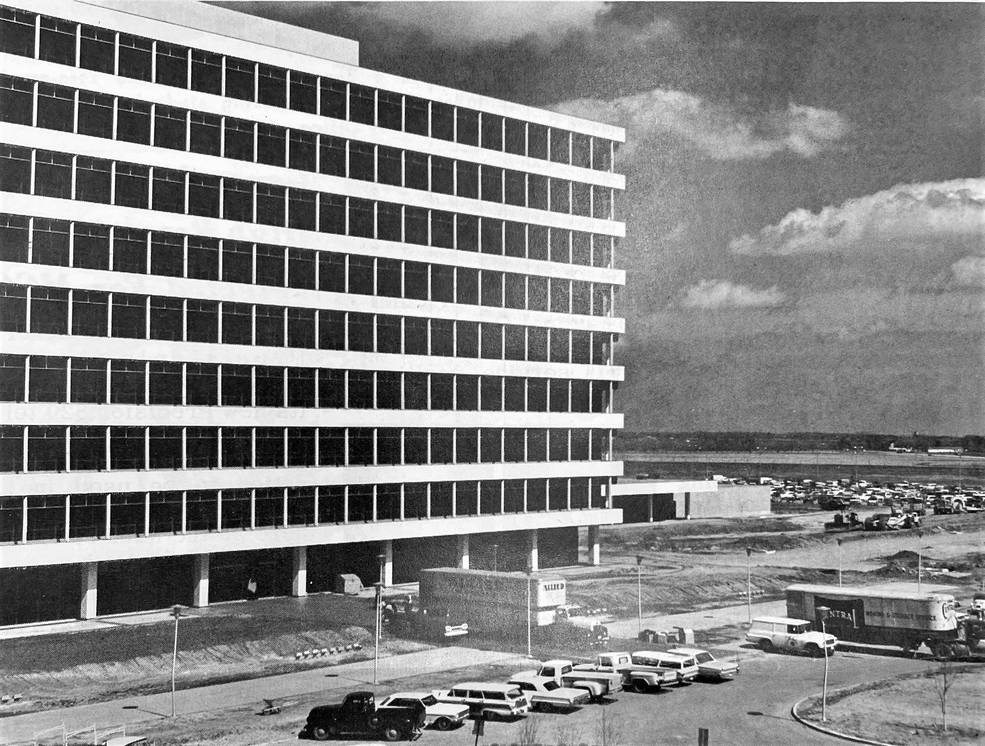
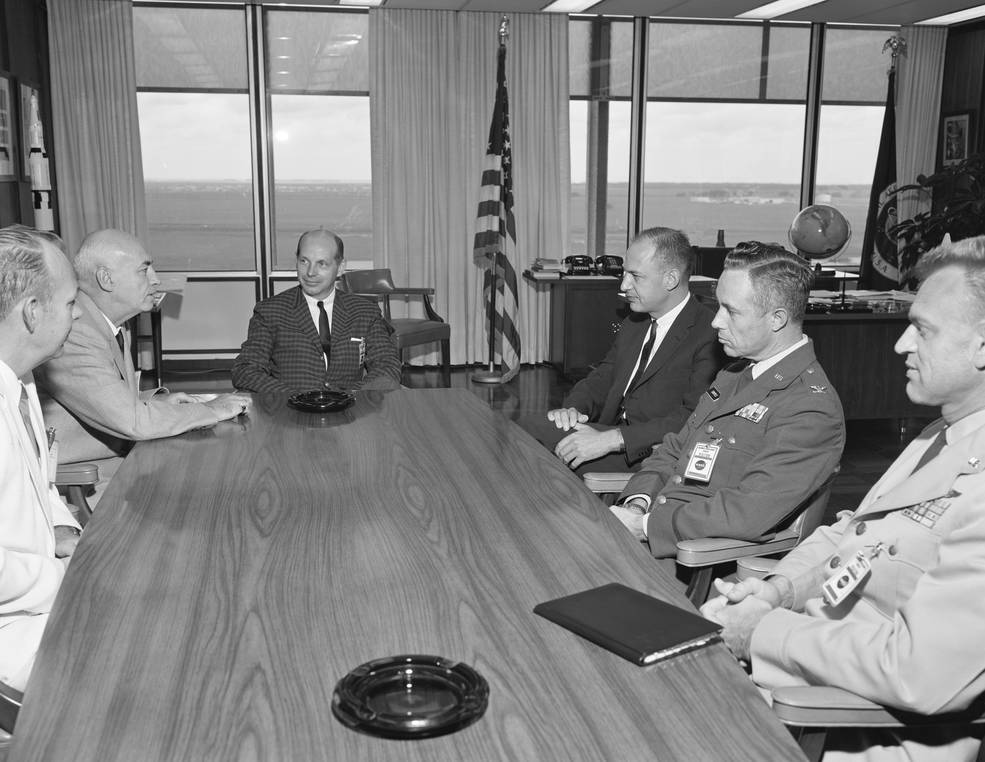
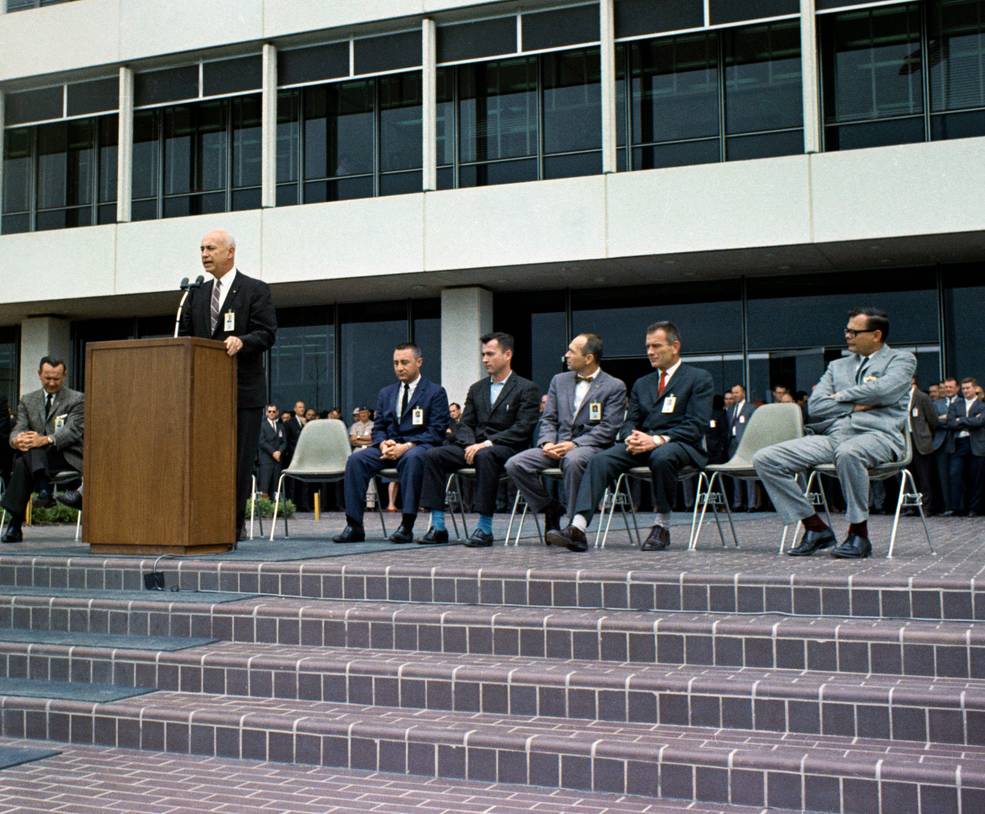
Left: Move-in day, March 6, 1964 – Robert R. Gilruth, director of the Manned Spacecraft Center (MSC), now NASA’s Johnson Space Center in Houston, takes up residence in his office on the 9th floor of the Project Management Building. Middle: Gilruth, second from left, hosting a delegation from the U.S. Air Force in his new office. Right: In April 1965, in front of MSC’s Project Management Building, Gilruth, standing at podium, welcomes home the crew of Gemini 3, the first two-person American spaceflight.
Gilruth oversaw the building of the center on Clear Lake while completing the Mercury missions and preparing for the more complex Gemini and Apollo programs, with the center’s workers dispersed in the MSC’s temporary facilities. By June 1964, all MSC employees had relocated to the new center even as construction of additional buildings continued. In June 1965, the new Mission Control Center in Houston controlled its first flight, Gemini IV, and has controlled all American human space missions since.
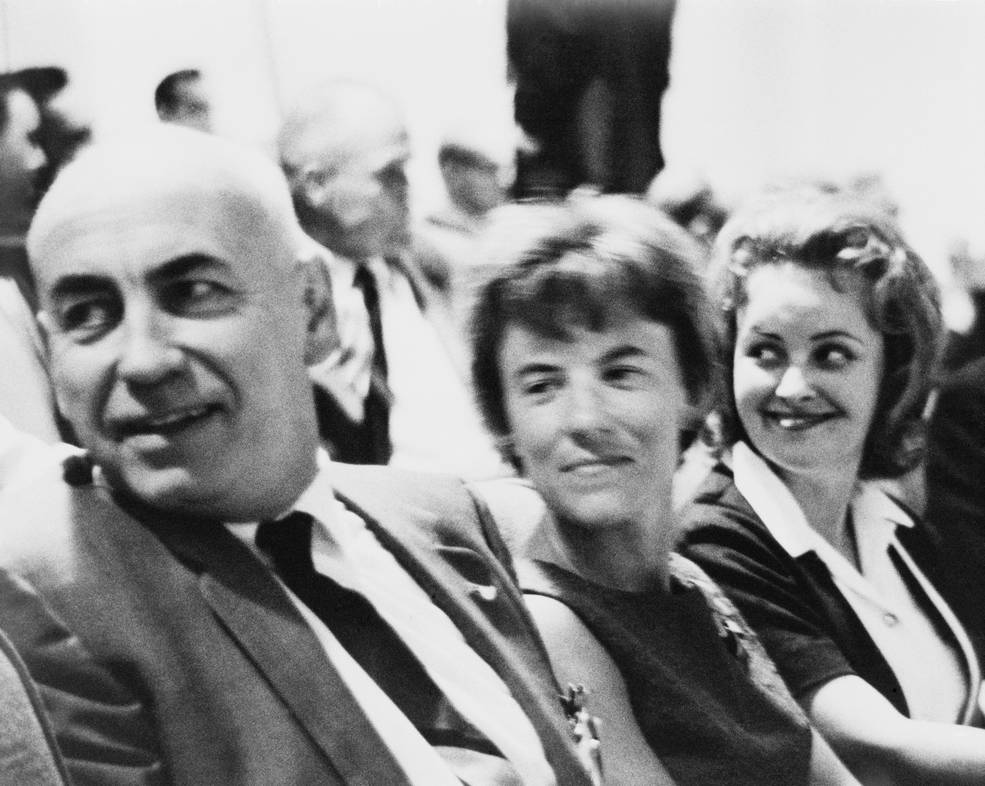
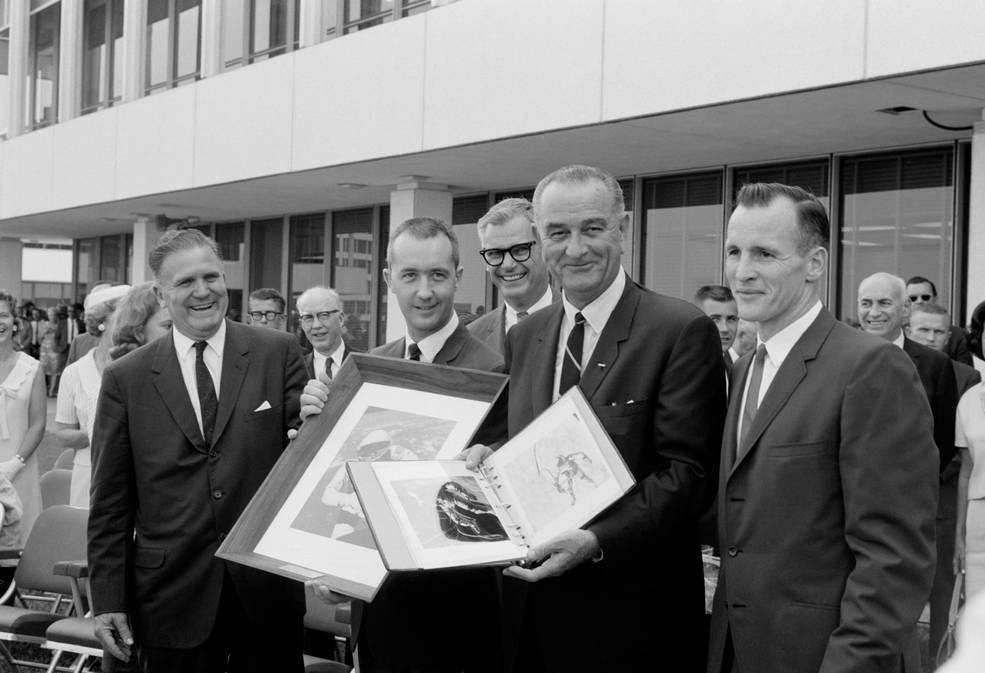
Left: In June 1965, Robert R. Gilruth, director of the Manned Spacecraft Center (MSC), now NASA’s Johnson Space Center, left, with Patricia McDivitt and Patricia White, wives wof the Gemini IV astronauts in the Mission Control Center’s Visitor Gallery during the Gemini IV mission, the first spaceflight controlled from MSC. Right: Gilruth, in background at right, during President Lyndon B. Johnson’s June 1965 visit to MSC to present awards to the Gemini IV astronauts.
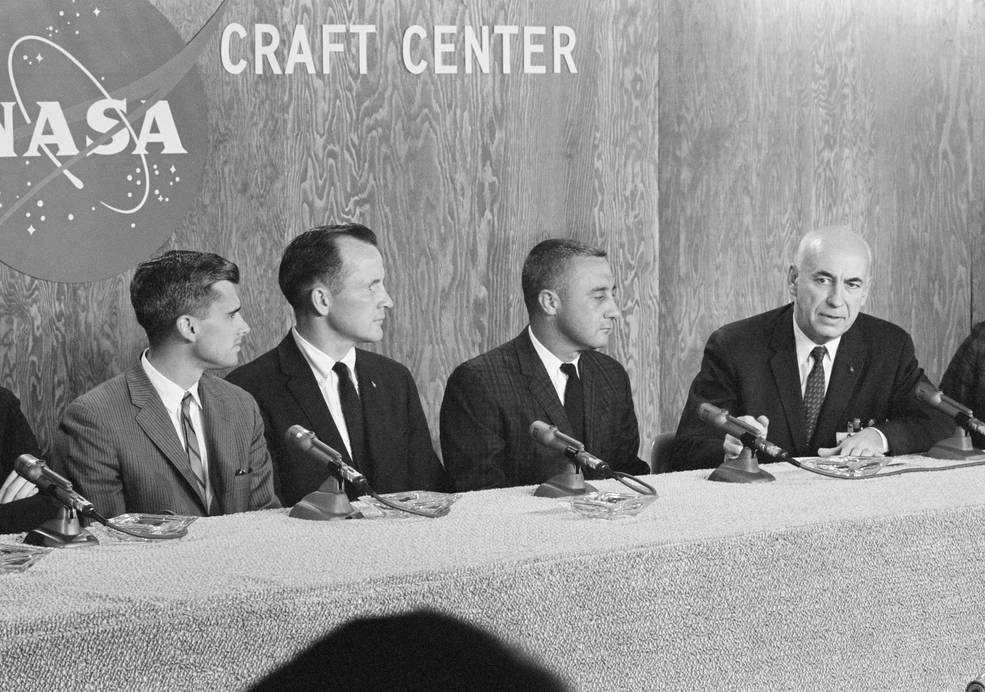
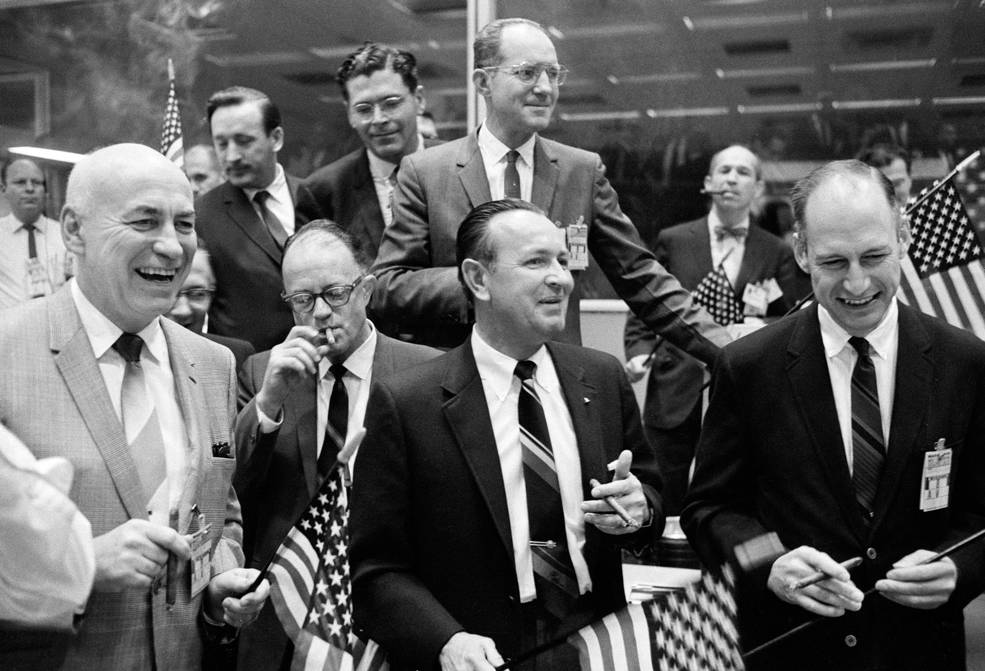
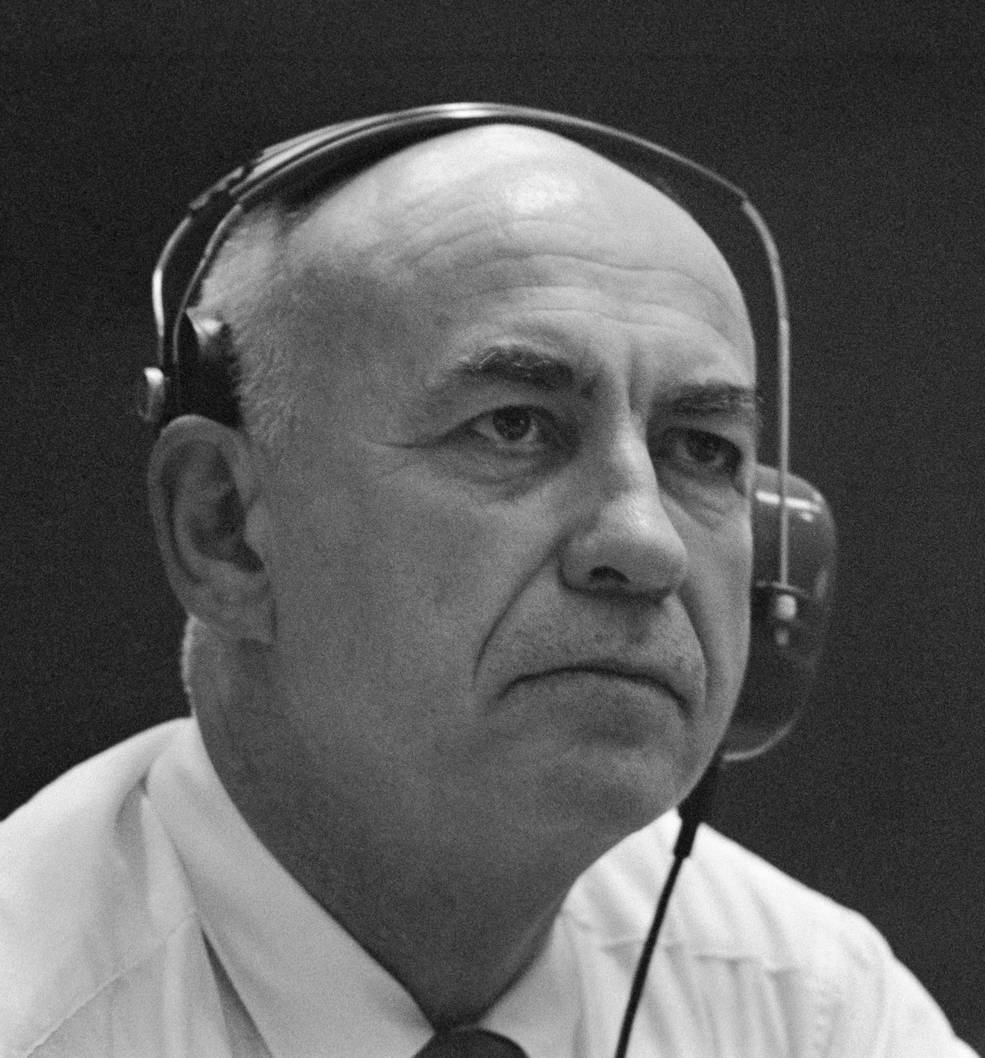
Left: In March 1966, Robert R. Gilruth, right, director of the Manned Spacecraft Center (MSC), now NASA’s Johnson Space Center in Houston, presenting the Apollo AS-204, later known as Apollo 1, crew of Roger B. Chaffee, left, Edward H. White, and Virgil I. “Gus” Grissom to the press. The three astronauts tragically perished in the Apollo 1 fire 10 months later. Middle: In December 1968, in MSC’s Mission Control Center, Gilruth, left, and other managers celebrate the successful splashdown of Apollo 8, the
first human spaceflight to orbit the Moon. Right: In the Mission Control Center in July 1969, a pensive Gilruth during Apollo 11, the first Moon landing mission.
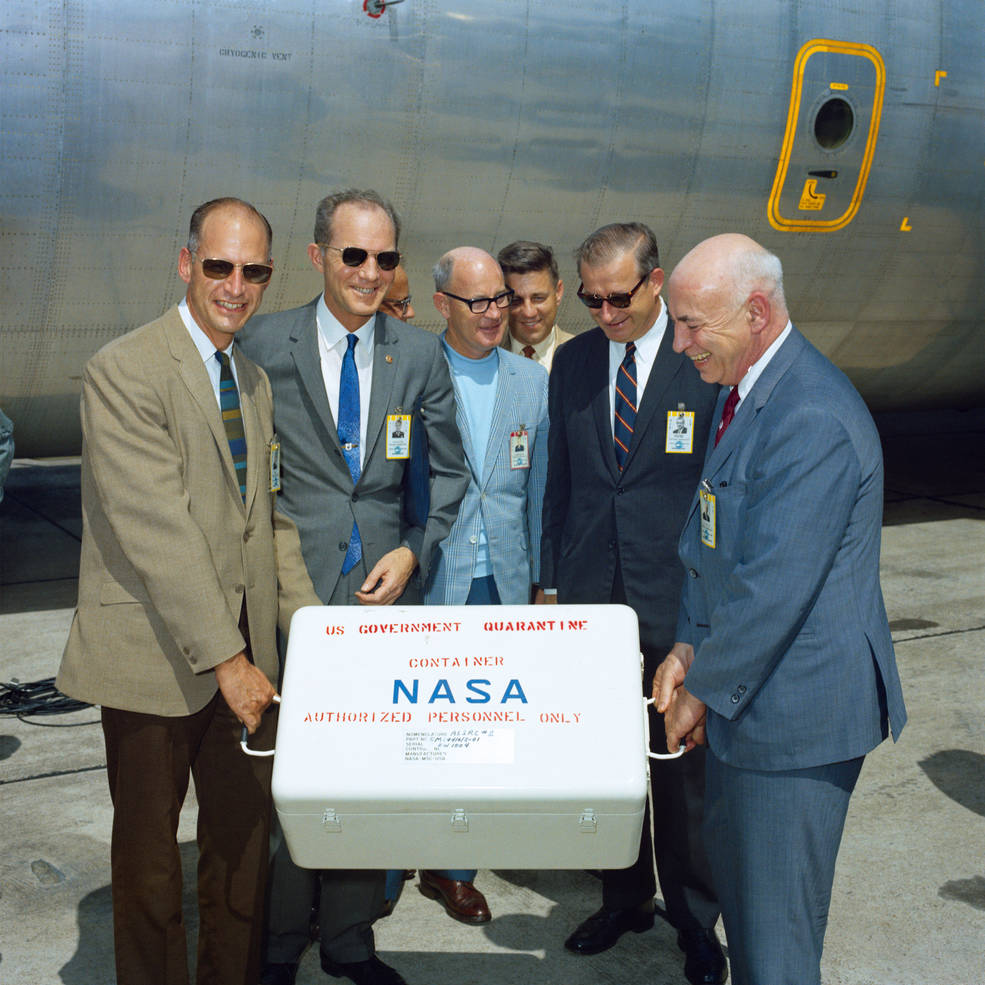
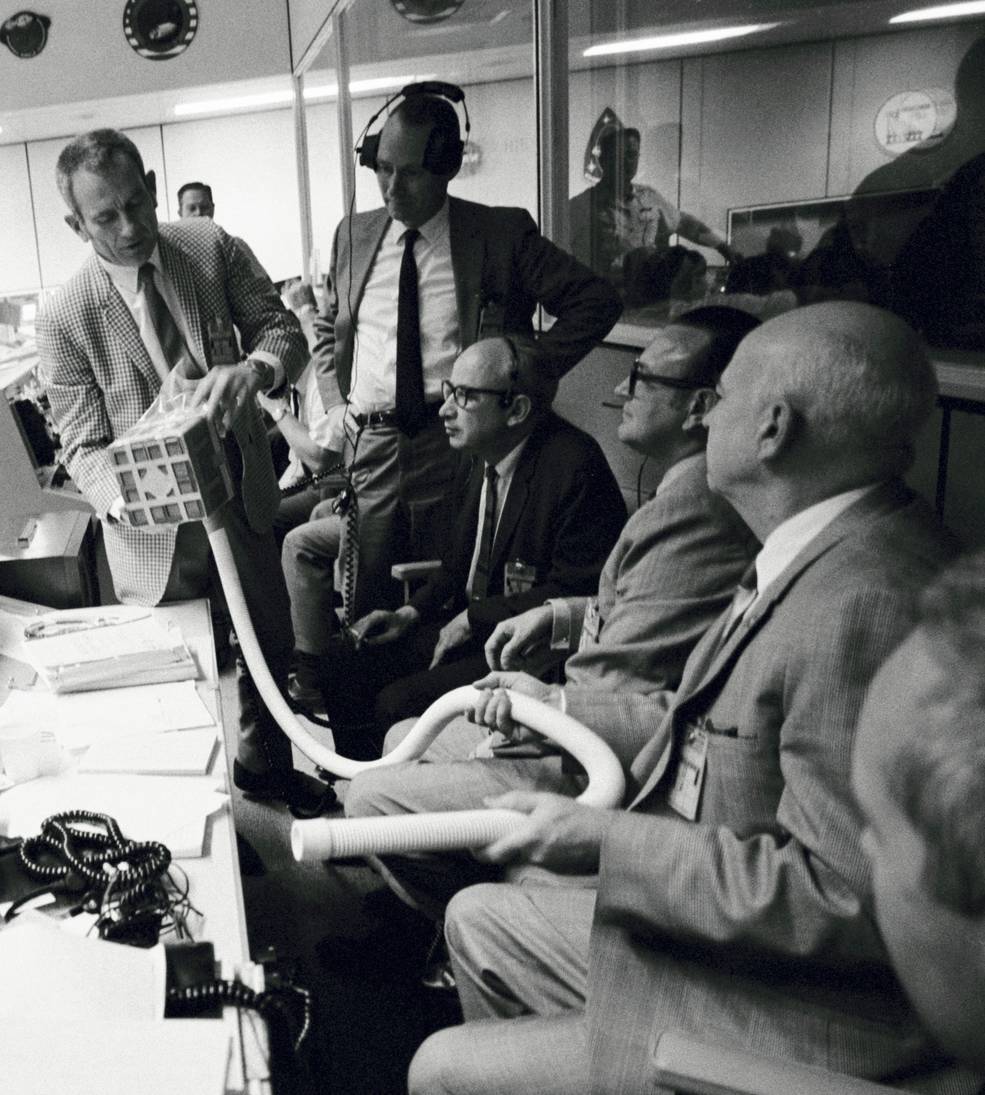
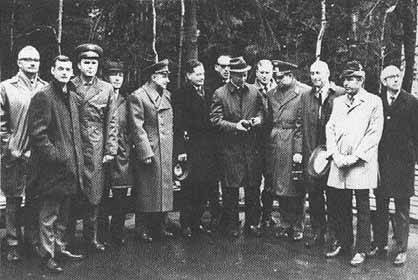
Left: In July 1969, at Ellington Air Force Base, Robert R. Gilruth, director of the Manned Spacecraft Center (MSC), now NASA’s Johnson Space Center, right, helps carry the first box of lunar samples returned by Apollo 11. Middle: In April 1970, Gilruth, right, holds the hose to the apparatus devised to clear the atmosphere aboard Apollo 13 following the explosion that crippled the spacecraft. Right: In October 1970, Gilruth, third from right, with the American and Soviet delegations at Star City, Russia, to negotiate a proposed common docking system, that led to the Apollo-Soyuz Test Project joint mission in July 1975.
Gilruth’s leadership guided the painful recovery following the January 1967 Apollo 1 fire. On July 20, 1969, Apollo 11 landed on the Moon, and four days later the astronauts splashed down safely, fulfilling President Kennedy’s goal. Gilruth’s next leadership challenge took place in April 1970, safely returning the Apollo 13 crew after an explosion crippled their spacecraft on the way to the Moon. Looking beyond the Moon landing missions, Gilruth embarked on negotiations with Soviet counterparts that ultimately led to the first docking between American and Soviet spacecraft in 1975.
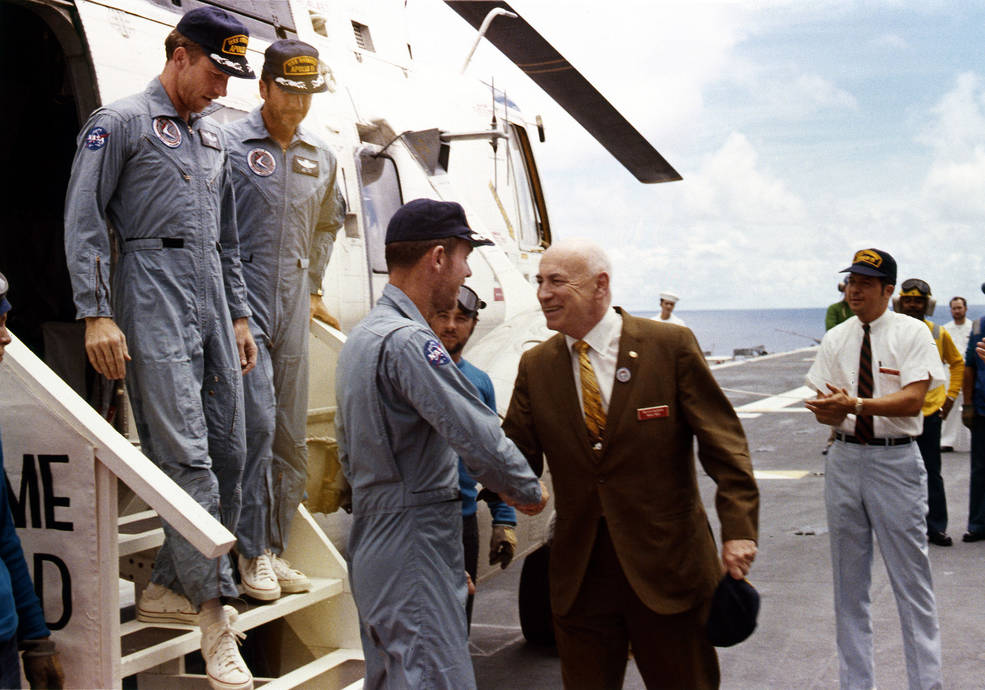
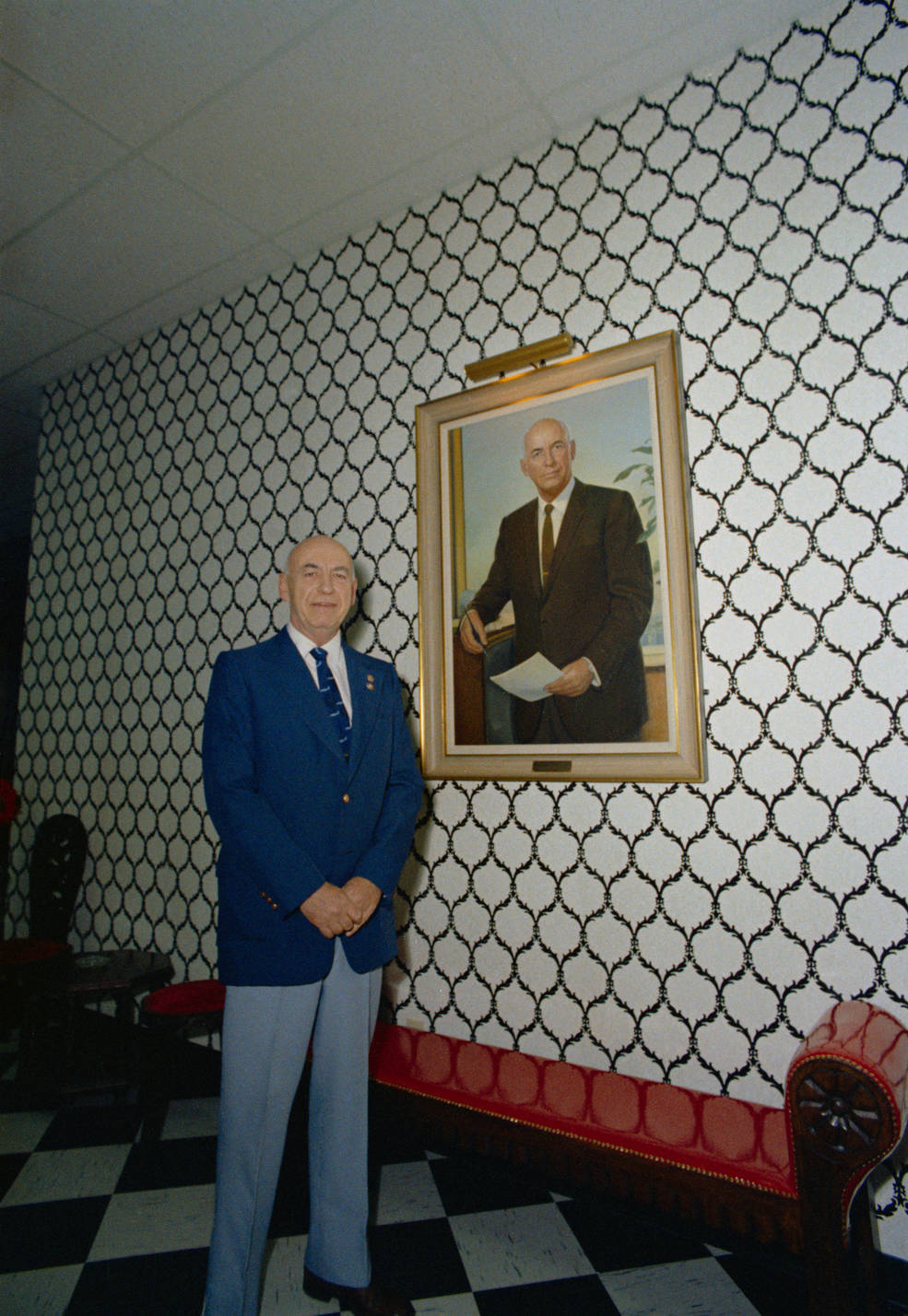
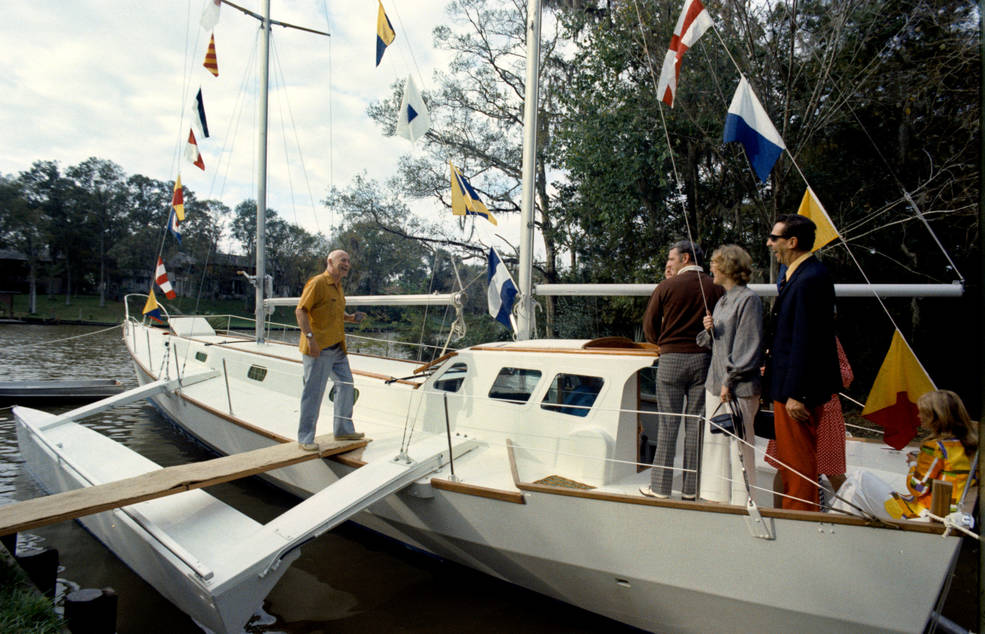
Left: In August 1971, aboard the USS Okinawa, Gilruth, right, greets the Apollo 15 astronauts who had just returned from their 12-day Moon landing mission. Middle: In August 1973, one year after retiring as center director, Gilruth poses next to his portrait in the newly-dedicated recreation center that bears his name. Right: In December 1973, lifelong avid sailor Gilruth prepares to step aboard the Outrigger, the boat he designed and built.
In August 1971, Gilruth watched the Apollo 15 splashdown, his last as MSC director, not from Mission Control but from the deck of the prime recovery ship USS Okinawa, greeting the astronauts as they stepped off the helicopter. In January 1972, he accepted a position at NASA Headquarters in Washington, D.C., and turned MSC management over to his deputy director, Christopher C. Kraft. Gilruth retired from NASA in December 1973, the same month he christened his multihull 52-foot sailboat Outrigger, a craft he designed and built himself. He continued to participate in NASA related activities for many years following his retirement. Gilruth died in 2000 at age 86, leaving a lasting legacy in human spaceflight.
The story continues next time as MSC is renamed after President Lyndon B. Johnson and transitions from Apollo through Skylab to the space shuttle.
John Uri
NASA Johnson Space Center





























